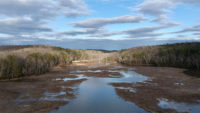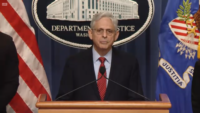Attorneys general from three states and the District of Columbia, along with the Chesapeake Bay Foundation, are challenging the U.S. Environmental Protection Agency’s enforcement of a multi-state agreement to reduce pollution levels in the bay.
The state officials contend EPA is not appropriately enforcing requirements under the Chesapeake Bay Total Maximum Daily Load (TMDL), which sets specific pollution reduction limits, that, if not met, require EPA to impose penalties or other consequences.
[View text of lawsuit here.]
At an online press briefing on Sept. 10, the top legal officials for Maryland, Virginia and the District of Columbia said they, along with the state of Delaware, had filed a lawsuit in the U.S. District Court for the District of Columbia, challenging what they view as EPA's lax enforcement of the bay plan.
Their main argument is that EPA has failed to “do its job,” in ensuring that all states within the watershed would be able to meet by the 2025 deadline water pollution goals established in 2010, said Karl A. Racine, Washington, D.C.’s attorney general. The Chesapeake Bay Foundation (CBF), an environmental group, filed a separate lawsuit with the court, also on Sept, 10.
A 2010 settlement between CBF and EPA established a TMDL along with the Chesapeake Bay Blueprint, in which six states across the watershed and the District of Columbia agreed to design and develop plans to establish pollution limits by 2025.
The settlement has sparked a slew of nutrient-reduction projects at wastewater treatment plants throughout the Delmarva area, including at the Blue Plains Advanced Water Treatment Plant in Washington, D.C., and the Back River wastewater treatment plant in Baltimore. Between 2017 and 2019 alone, the District of Columbia spent approximately $113 million to fulfill its commitments under the bay agreement. Noting that Maryland has also spent millions, state Attorney General Brian Frosh said, “It has to be a collective effort.”
The CBF’s latest assessment, released Aug. 13, said that Maryland, Virginia, Delaware and the District of Columbia will need to accelerate their efforts to reduce pollution, such as from nitrogen and phosphorus, but they are on track to meet those targets. Pennsylvania, however, has never met goals for nitrogen reduction, and is not on track to hit the reductions required under the TMDL. New York also is lagging, according to the CBF.
Each state in the watershed submitted its pollution reduction plans to EPA in August 2019. While most states were on track, EPA concluded that Pennsylvania’s plan would meet only 75% of its reduction target, and New York’s plan would meet just 64%.
Despite that conclusion, EPA has not required Pennsylvania and New York to prepare new plans, nor has it threatened any enforcement actions. In May 2020, the states filing the lawsuit warned EPA that they would sue if the agency did not take stronger measures to enforce the TMDL.
In their complaint, the states contend that by failing to require Pennsylvania and New York to develop and implement plans that meet the Chesapeake Bay Agreement, “EPA has breached its nondiscretionary duty to ensure that management plans submitted by the bay state signatories will achieve and maintain the nutrient goals of the Chesapeake Bay agreement.”
The states are seeking a court order stating that EPA is violating the law and requiring the agency to ensure that Pennsylvania and New York develop and implement plans that will meet the targets established under the Chesapeake Bay Agreement.
An EPA spokesperson said in a statement sent to ENR: "This litigation only serves to set back our efforts, divert partnership resouces and divide a partnership that is making exceptional advancement in restoring the Chesapeake Bay and local waters."
A spokesperson for the Pennsylvania Dept. of Environmental Protection said the department does not comment on litigation.
A spokesperson for the New York Dept. of Environmental Conservation said in an emailed statement, "While New York does not comment on pending litigation, EPA monitoring data confirms that if the quality of the water in Chesapeake Bay were as good as the water quality in New York's portion of the Susquehanna River, the Chesapeake would not be impaired for nitrogen, phosphorus or sediment."
The spokesperson added, "This scientifically confirmed fact makes the key point—Chesapeake Bay pollution is not from New York. New York is fulfilling its clean water responsibilities under the Chesapeake Bay TMDL and is a committed partner to implementing its pollution-reducing "Watershed Implementation Plan" under the Chesapeake Bay program."





Post a comment to this article
Report Abusive Comment